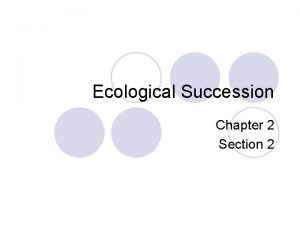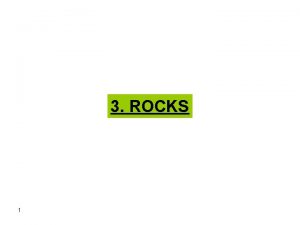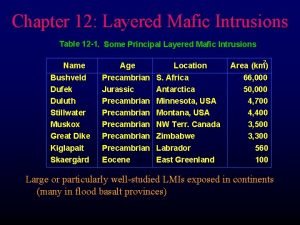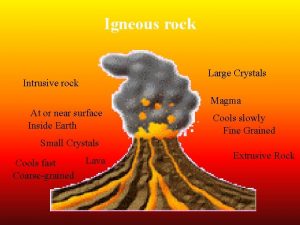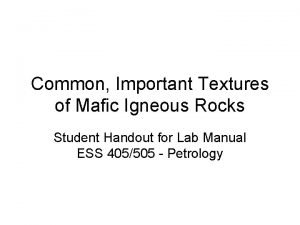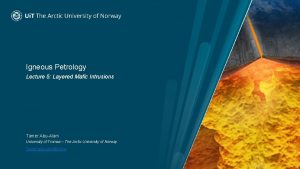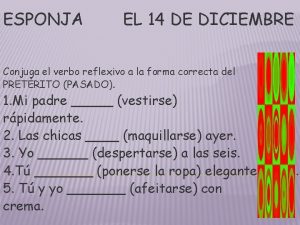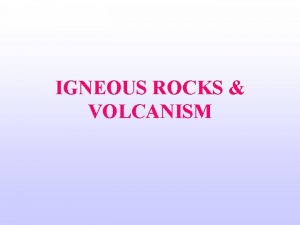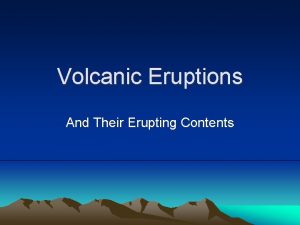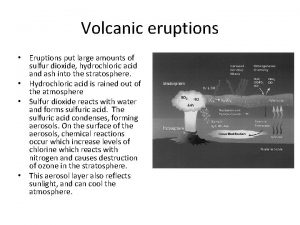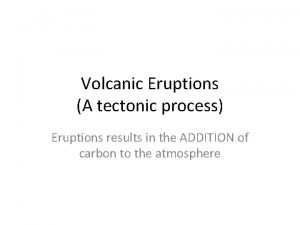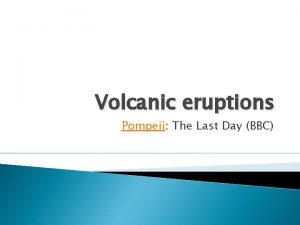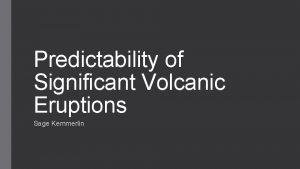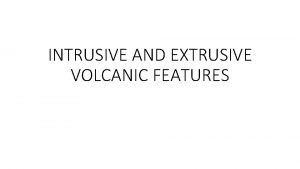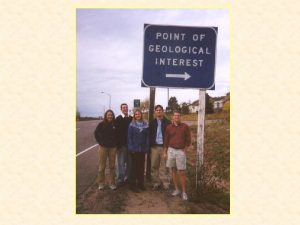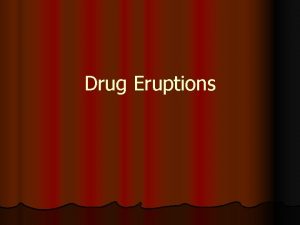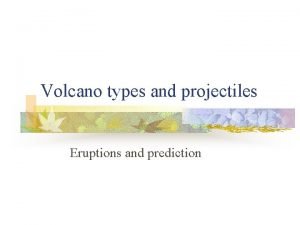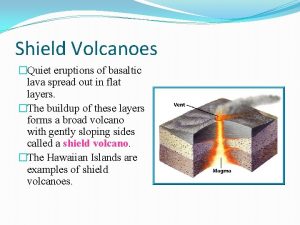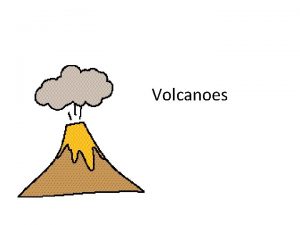Volcanic Eruptions Mafic Lava Dark colored Rich in

















- Slides: 17

Volcanic Eruptions

Mafic Lava Ø Dark colored Ø Rich in magnesium and iron Ø Formed from oceanic crust Ø Cools rapidly

Felsic Lava Ø Light colored Ø Rich in silica Ø Formed from continental crust

Eruptions Ø Composition of lava determines the force of the eruption

Oceanic Eruptions Ø Erupt on the ocean floor and oceanic islands Ø Mafic lava ØVery hot ØVery thin (watery) ØFlows easily

Continental Eruptions Ø Erupt on the land Ø Felsic lava ØCooler ØThicker ØContains large amounts of gases ØCarbon dioxide and water vapor ØExplosive

Mafic Lava Ø Pyroclastic material (tephra)-rock fragments ejected from volcanoes ØVolcanic ash- less than 2 mm ØVolcanic dust- less than. 25 mm ØBoth can travel around the Earth in the atmosphere

Volcanic Cones Ø Piles of volcanic material around the vent

Volcanic cones Ø Shield cones ØCover wide areas ØBroad at the base ØGentle slope ØQuiet eruptions ØExample Hawaiian Islands

Shield cones

Volcanic cones Ø Cinder cones ØExplosive eruptions ØVery steep slopes ØRarely more than a few hundred meters high

Cinder cones

Volcanic cones Ø Composite cones ØDevelop into high volcanic mountains ØAlternating types of eruptions ØExamples: Mount Fuji, Mount Hood, Mount St. Helens

Composite cones

Crater Ø Funnel shaped pit at the top of a volcanic vent

Caldera Ø Large basin shaped depression caused by an explosive eruption ØMagma chamber below a vent, causing the volcanic cone to collapse

Predicting Volcanoes Ø Earthquakes Ø Temperature changes in rock around vent Ø Bulging of the surface of the volcano Ø Change in gases given off
 Perbedaan hot lava dan hot lava volcano
Perbedaan hot lava dan hot lava volcano Secondary sucession
Secondary sucession Rhyolite mafic
Rhyolite mafic Rhyolite mafic
Rhyolite mafic Risitic layering
Risitic layering Obsidian mafic
Obsidian mafic Felsic composition
Felsic composition Scoria felsic or mafic
Scoria felsic or mafic Igneous sill
Igneous sill Mafic texture
Mafic texture Mafic black basalt
Mafic black basalt In the dark dark town
In the dark dark town Dark matter and dark energy ppt
Dark matter and dark energy ppt Doreite
Doreite Verbo
Verbo Solidified lava rock family
Solidified lava rock family šcc gimnazija lava
šcc gimnazija lava How do lava lamps work
How do lava lamps work

